SEO Link Building is a fundamental aspect of search engine optimization that directly impacts a website’s authority and ranking on search engines. By acquiring high-quality backlinks from reputable sites, businesses can enhance their visibility and credibility online. Backlinks act as votes of confidence, signaling to search engines that your content is valuable and trustworthy. In this article, we’ll explore why SEO Link Building is essential, the different strategies available, and how implementing an effective link-building plan can boost your website’s search engine performance.
At Octopuswriters, we focus on SEO Link Building to enhance your site’s ranking. Quality backlinks are vital for improving authority and visibility.
What is SEO Link Building?
SEO link building is a strategy focused on obtaining links from external websites to your own. This helps search engines like Google perceive your site as more credible, potentially boosting its ranking in organic search results.
In essence, Google views backlinks from other websites as a form of endorsement. The greater the number and quality of these backlinks, the more reliable and authoritative your site appears to search engines.
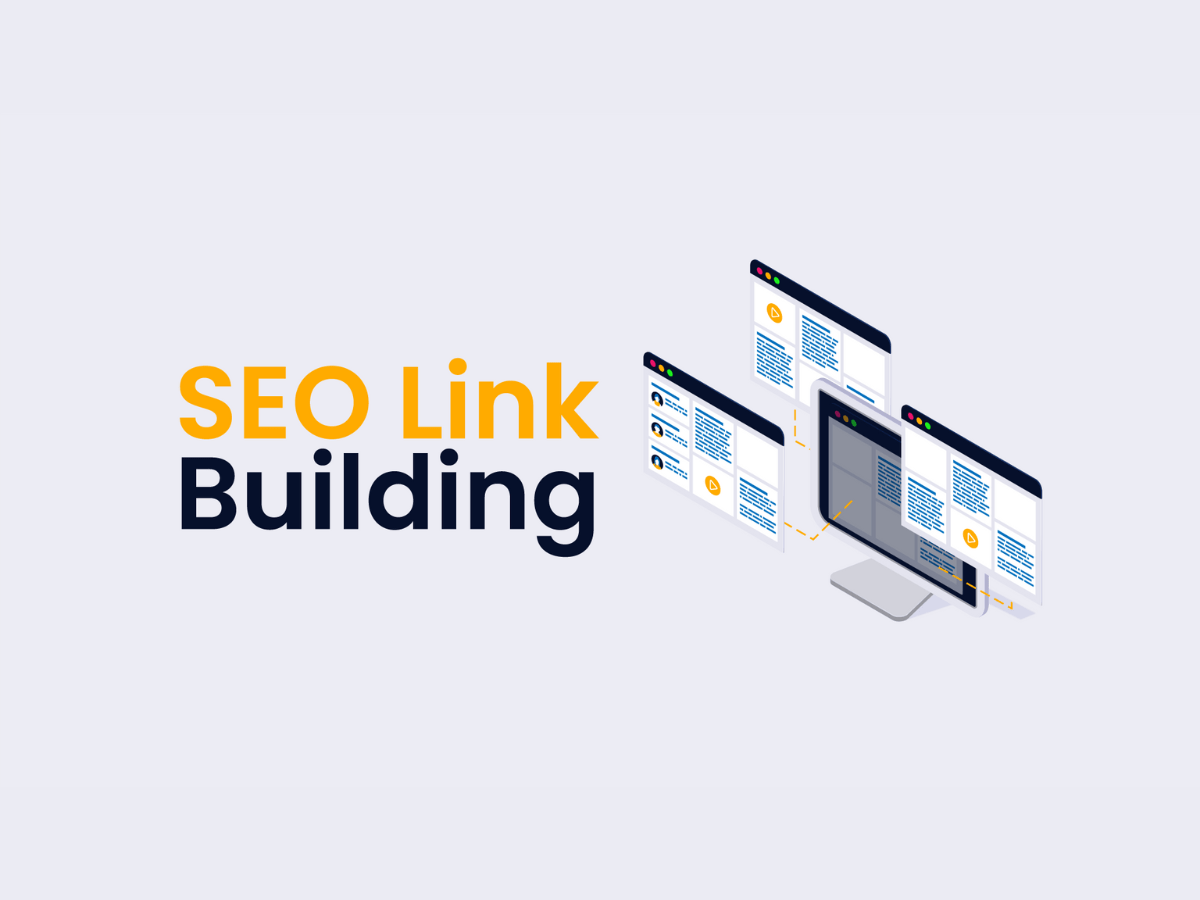
What is SEO Link Building?
Why Link Building Is Important for SEO
SEO Link building is crucial because it plays a significant role in how Google ranks web pages. According to Google:
“Generally, webmasters can enhance their site rankings by increasing the number of high-quality websites linking to their pages.”
Let’s say we run a site that sells wind turbine equipment and we’re competing with another manufacturer. One factor Google will consider when deciding how to rank our pages is the popularity of the links pointing to each site.
Although this example offers a basic understanding of link building’s importance, it leaves out several essential aspects like:
- The trustworthiness and authority of the linking sites.
- The SEO and content quality of both competing sites.
- The anchor text used in the backlinks.
For a deeper dive into how PageRank works, consider these resources:
- The original Google PageRank paper
- A detailed discussion on the PageRank formula
- The Wikipedia entry on the topic
The key takeaway is that, as Google mentions, your content has a better chance of ranking higher for the keywords you target when you secure backlinks from other websites.

Why Link Building Is Important for SEO
How to Build Links for Effective SEO
Most popular SEO link building strategies generally fall into four main categories:
- Adding links – This involves manually placing your link on various websites.
- Asking for links – Here, you reach out via email to website owners in your niche, requesting them to link back to your content.
- Buying links – Similar to the previous method, but you offer monetary compensation (or other incentives) in exchange for the backlink.
- Earning links – This happens when you create and promote exceptional content or resources that naturally attract links from other sites.
Many businesses and digital marketers eventually opt to hire a professional link builder or agency to handle SEO link building due to the substantial time and effort it requires.
However, even if you choose to outsource SEO link building, having a foundational understanding of the process is invaluable. It allows you to assess whether the person or agency you’ve hired is performing effectively.
Now, let’s explore each of these four strategies in more detail.
Adding links
This approach involves visiting websites that aren’t yours and manually adding your link to them, which is a common part of SEO link building strategies.
Some of the most common techniques in this category include:
- Creating social profiles
- Submitting business listings to directories
- Adding your site to review platforms
- Participating in forums, online communities, and Q&A websites
While these methods are simple to execute, their ease of use is why such links often hold minimal value in Google’s eyes.
Moreover, these types of links offer little competitive advantage. If you can easily place a link on a site, your competitors can do the same.
Despite this, these link-building methods shouldn’t be entirely dismissed. In fact, many professional link builders begin by creating these kinds of links when dealing with new websites, often referred to as building “foundational links.”
Think about it—most businesses have branded profiles on major social media platforms, directories, and review websites like Yelp, Trustpilot, ProductHunt, and Glassdoor. Each of these profiles usually links back to the company’s website.

Source: Adding links
Asking for links
This approach involves reaching out to website owners and requesting a link, a tactic often referred to as “link outreach” in SEO link building.
However, it’s crucial to reach out to sites that are relevant to your content. For instance, you wouldn’t ask a site like datasciencecentral.com to link to a page about cookie recipes. Choosing websites that relate to your page makes them more likely to consider your request.
The process of finding suitable websites to contact is known as “link prospecting.” The more effort you put into identifying relevant targets, the better your chances of success.
But why would other website owners, even the relevant ones, want to link to your page? Ideally, they’ll be impressed enough by your resource to share it with their audience.
Of course, not every page on your site will be groundbreaking enough to attract numerous links. That’s why SEO experts have developed various tactics to convince other site owners to link back. Here are a few common ones:
- Guest posting – Write a high-quality article for their site, including a link back to your own.
- Skyscraper technique – Find a popular but outdated page and create a superior version on your site. Then reach out to those linking to the original.
- Resource page link building – Locate pages that list resources similar to yours and request to be added.
- Broken link building – Identify a dead page with many backlinks, recreate a similar resource on your site, and notify those linking to the original.
- Image link building – If sites use your images without credit, ask them to link to your site.
- HARO and journalist requests – Provide expert quotes for their articles.
- Unlinked mentions – Request to turn any unlinked mentions of your brand into actual links.
- PR – Pitch a compelling story that encourages coverage and links.
Although each tactic sounds reasonable, the success rate is often low. If you manage to secure five links from 100 outreach emails, that’s a win.
One way to increase your chances is by building relationships within your industry before you ask for anything. Think about it—if a stranger emailed you asking for a link, would you respond? Probably not. But if it came from someone you’ve interacted with on Twitter or met at an event, you’d be much more likely to engage.
In short, connecting with people in your field ahead of time (and perhaps offering small favors) makes it easier to request links later.
Buying links
Buying links is often viewed as one of the simplest methods for link building. Many website owners would gladly provide you with a link in exchange for payment.
However, this practice comes with significant risks. Google considers the act of buying links as a manipulation of its ranking algorithms and could potentially penalize your site by removing it from search results.
Another danger of buying links is the possibility of spending money on low-quality links that won’t deliver any real value.
That said, we won’t be advising you on how to buy links properly, as we want to avoid suggesting any tactics that could jeopardize your business or finances.
Nonetheless, it’s important to note that many individuals in the SEO link building field do resort to purchasing links to reach their desired rankings. By examining your competitors’ backlink profiles, you’ll quickly discover whether they have engaged in link buying.
Earning links
You “earn” links when other websites naturally link to your pages without any prompting from you. This usually occurs only if you have something remarkable that others are eager to reference.
Here are some elements that can make your website’s pages link-worthy:
- Proprietary data from your company
- Outcomes of experiments that involve considerable effort
- Unique insights and compelling viewpoints (often referred to as thought leadership)
- Industry surveys
- Coverage of breaking news
Creating such valuable content can significantly enhance your chances of gaining organic backlinks, which is essential in SEO link building.

Source: Earning links
Best link building strategies
Numerous link building tactics and strategies are available, varying in effectiveness. While some remain highly productive, others have become outdated and are likely to be a waste of time.
Based on our insights, here are the approaches that currently yield the best results in the realm of SEO link building:
Replicating your competitor’s backlinks
If a website is linking to your competitor, there’s a strong possibility they might be willing to link to you as well.
To initiate this strategy, start by examining who links to the main pages of your competitors’ sites. These individuals are referencing the overall business rather than specific web pages, which could provide you with a broader context for your outreach.
For instance, some pages that link to our homepage demonstrate that platforms often mention Ahrefs alongside other marketing tools. This supports the idea that requesting a mention alongside your competitors is a reasonable approach.
Once you’ve analyzed homepage links, the next step is to identify which specific pages on your competitors’ sites garner the most backlinks. We utilize a report in Site Explorer called “Best by links” to assist in this. By reviewing the Best by links report for ahrefs.com, it’s straightforward to see which types of pages have attracted the most links:
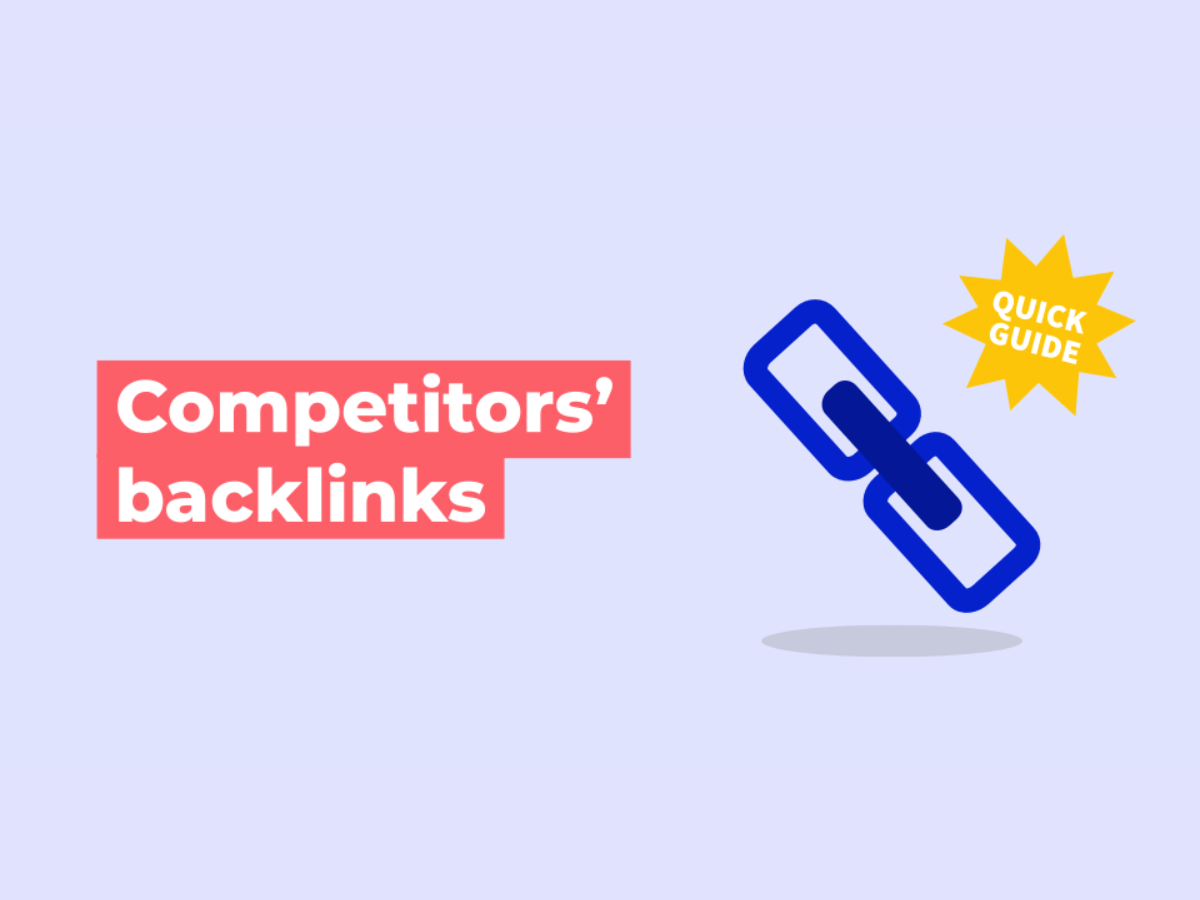
Replicating your competitor’s backlinks
- Homepage – Many people reference Ahrefs as a prominent software or company.
- Free tools – Our tools like the Keyword Generator and Website Authority Checker naturally draw numerous backlinks due to their value.
- Blog – A consistent stream of quality content has led many to recommend and link to our blog.
- Research studies – Insightful data tends to attract substantial links due to its appeal.
Take a moment to explore the Best by links report for your competitors to see which pages are generating backlinks for them. By identifying their successful strategies, you can create similar or even superior resources for your own site.
After implementing these tactics, I recommend setting up a backlink alert to receive notifications when your competitors acquire new links. This will allow you to promptly contact those who are linked to them and seek inclusion on the same page. Overall, your competitors represent a treasure trove of valuable link opportunities. As you delve into their backlinks, you’ll uncover patterns in link building that can be advantageous for your SEO link building efforts. We’ve written a comprehensive article on this topic, so be sure to check it out!
Targeted link outreach
Suppose you’ve completed your keyword research and identified a specific page that you want to rank highly on Google for a particular keyword. Now, your goal is to build links specifically to that page.
The ideal starting point is to analyze the top-ranking pages for your target keyword and investigate the sources of their backlinks.
Begin by entering your keyword into Ahrefs’ Keywords Explorer and navigate to the “SERP Overview” widget. This section will display the leading pages along with the number of backlinks and linking domains they possess.
For example, if you’re aiming to rank for “best productivity apps,” you’ll see the corresponding SERP results. Here’s the next step to follow:
- Filter the results to focus on “meaningful backlinks” only.
- Examine the filtered pages individually, checking if the context of each page supports the inclusion of a link to your resource.
- Reach out to the website owners to advocate for adding a link to your content on their page.
Another valuable strategy for discovering potential link opportunities is to look for websites that have mentioned your topic. If your focus is on building links for a productivity app, connect with websites that reference “productivity” within their content.
While you could search for these mentions using Google, keep in mind that it typically returns a limited number of search results—often just a few hundred. By leveraging various SEO link building techniques, you can uncover more opportunities for links that will enhance your website’s visibility and authority.
Creating linkable assets
In the realm of SEO, the phrases “linkable asset” or “link bait” describe content intentionally designed to draw in backlinks. These linkable assets can manifest in various formats, including:
- Industry surveys
- Research studies
- Online tools and calculators
- Awards and rankings
- How-to guides and tutorials
- Definitions and newly coined terms
- Infographics, GIFographics, and “Map-o-graphics”
Previously, I mentioned a couple of instances of linkable assets, such as a blogger survey I conducted for my personal site and a research project we executed at Ahrefs. Now, let me present an intriguing example from another source. By utilizing these strategies in your own SEO link building efforts, you can enhance your content’s appeal and increase its likelihood of earning links.
Content promotion
We have a dedicated article that outlines 21 tactics for promoting content. However, for now, let’s concentrate on three key methods:
- Advertising – This is a straightforward way to reach thousands of relevant users, but it may require a substantial budget.
- Influencer Outreach – Identify active thought leaders in your field and contact them when you publish something noteworthy. If you’re fortunate, they might share your content with their audience.
- Building a Following – It’s essential to begin constructing an email list if you haven’t already. Additionally, engage actively on social media platforms like Twitter and LinkedIn. By consistently providing high-quality content, you’ll attract more followers, many of whom may link to your work.
Don’t forget to promote your existing content by referencing it in your new publications. As Ryan Holiday highlights in his book “Perennial Seller,” “Creating more work is one of the most effective marketing techniques of all.” This principle also applies to your SEO link building strategies, as the more you create, the more opportunities there are for others to link to your valuable resources.
Guest posting
This particular SEO link building strategy is often viewed negatively by some professionals in the field. The main concern is that some individuals tend to take it too far, making it seem spammy.
However, guest blogging remains one of the most favored methods for link building among SEOs today. At the Ahrefs Blog, for instance, we occasionally accept guest contributions. Guest authors are welcome to include links to their own relevant resources within their posts, allowing for legitimate link-building opportunities.
So, how can you successfully get your articles published on leading blogs within your niche? The key lies in pitching them a compelling article idea.
A helpful tip for generating content ideas that are difficult to decline is to identify a few competitors of the blog you’re targeting. Use the Content Gap tool to pinpoint topics that drive significant traffic for them but haven’t been addressed by the blog you wish to contribute to.
For instance, by conducting a quick Content Gap analysis comparing our blog to those of our competitors, we can uncover a range of appealing topics that attract search traffic to their sites but remain unaddressed on ours. This approach can be a valuable part of your SEO link building efforts.

Source Guest posting
Link building tools
Although you can technically manage SEO link building with a bit of creativity and a Gmail account, several tools can greatly streamline and speed up the process of acquiring quality backlinks.
Here are some free options for link building:
- Ahrefs’ Free Backlink Checker – Shows the top 100 backlinks pointing to any website or URL, perfect for kickstarting your SEO link building efforts.
- Google Alerts – Sends notifications when specific keywords or phrases are mentioned on new pages, helping you identify potential link building opportunities.
For more advanced, premium tools:
- Ahrefs’ Site Explorer – Provides comprehensive data on all backlinks for any website or URL, offering filters based on critical SEO metrics to optimize your link building strategy.
- Ahrefs’ Content Explorer – An exceptional tool for link prospecting, helping you discover thousands of relevant websites for guest posts and link requests, while also identifying linkable assets across various topics.
- Ahrefs Alerts – Like Google Alerts but with enhanced SEO-specific filters to better support your link building goals.
- Pitchbox/BuzzStream/GMass – These email outreach platforms allow for personalized emails at scale, widely used in SEO link building campaigns.
- Hunter.io/Voila Norbert – These “email lookup services” help you quickly find contact details of websites for efficient link building outreach.
What are the types of link building in SEO?
After clearly understanding the concept of Link Building, what is it? The content below will provide detailed information about some Link Building in SEO. Let’s read it now!
Link from DA
When a website accumulates links and reputation, Link Building from the Website will have more strengths. So, a link from a high authority site will be greater than a low authority Backlink.
Anchor text
Anchor text plays a dual role: it should convey the content of the linked page and encourage users to click on it. A thoughtfully crafted anchor text offers two key benefits:
- It increases the likelihood of clicks, resulting in greater direct traffic.
- It aids search engines in comprehending your page’s content, which can potentially enhance traffic from search results.
While you cannot influence the anchor text that others use when linking to your site, you do have the ability to optimize anchor text for your own internal links.
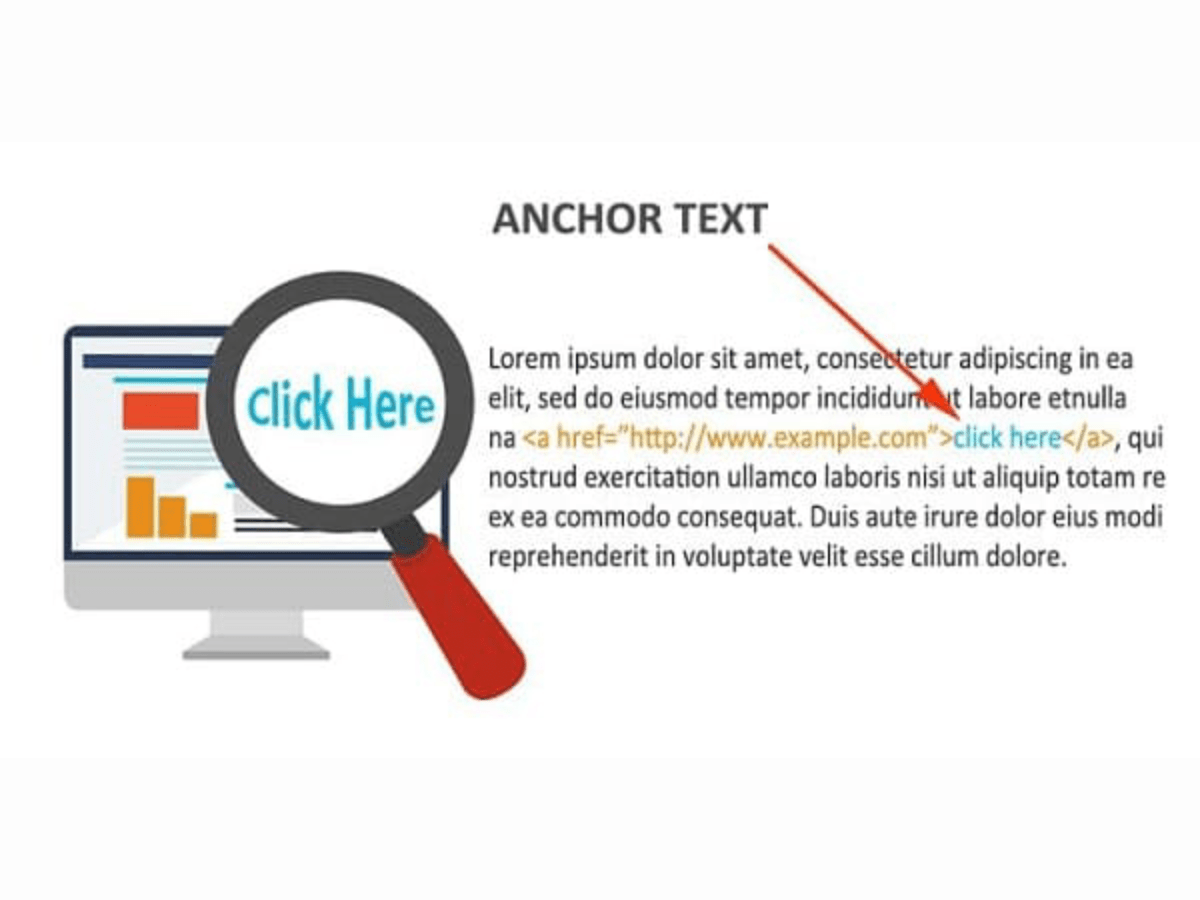
Source: Anchor text
A link in HTML
The initial segment contains the URL that you’re linking to, which in this instance is the address of the Yoast SEO plugin page (https://yoast.com/wordpress/plugins/seo/). The subsequent segment, “Yoast SEO plugin for WordPress,” represents the text that users can click on when viewing the page. This clickable text is referred to as the ‘anchor text.’
Internal and external links
For SEO, there are two primary types of links: internal links and external links.
Internal links are hyperlinks within your website that connect different pages to each other.
External links, often referred to as incoming links, are hyperlinks that other websites create to direct their visitors to your content (or vice versa). In the SEO field, these external links are commonly called “backlinks.” When other sites link to your pages, they are providing you with backlinks. Conversely, when you link from your pages to theirs, you are giving them backlinks.
It’s important to note that internal linking and link building are not the same. This article focuses solely on SEO link building, which involves obtaining backlinks from other websites to your pages.
Authority
In general, the authority of the linking site significantly affects the value of the backlink.
For instance, a backlink from bbc.co.uk is likely to have a much greater impact on your SEO than one from a less-known blogger.
Semrush evaluates site authority using a metric called Authority Score, which ranges from 0 to 100. This score is based on three primary factors:
- Link power: The overall quality and number of backlinks pointing to the site.
- Organic traffic: The estimated monthly visits the site receives from unpaid search engine results.
- Natural profile: The extent to which the site’s backlink profile appears organic and non-spammy.
When using the Link Building Tool to identify potential sites for SEO link building, you can check their Authority Scores in the “AS” column to gauge their value as link sources.
Relevance
It is generally more effective to build SEO links from websites that are closely related to your own, as this indicates that you are regarded highly by experts within your industry.
Additionally, backlinks embedded within highly relevant content tend to be more beneficial.
Consider the following examples of three backlinks to your range of basketball shoes:
- Backlink 1 is featured on a gardening website in an article about plant cultivation. This link is unlikely to have much SEO value, if any, due to the lack of relevance between the site and your niche.
- Backlink 2 is found on a sports blog in a post discussing cardiovascular workouts. This link may carry some SEO weight since the site is within a similar niche.
- Backlink 3 is included on a sports blog within a buying guide for basketball shoes. This link is likely to provide significant SEO value, as it demonstrates a high level of relevance to your topic and indicates that the link is genuinely beneficial for readers.
Focusing on these factors is crucial for effective SEO link building.

Source: Relevance
Link Placement
The visibility of a backlink on a webpage can significantly influence its value for SEO purposes.
Google takes into account the likelihood of a reader clicking on a link depending on its placement, a concept referred to as the “reasonable surfer model,” which is outlined in a specific patent.
For instance, links found in sidebars, footers, or lower down in the page content are often deemed less valuable compared to those positioned higher within the main body of the page.
Ideally, you want your backlink to appear near the beginning of the main body content, as this placement tends to maximize its impact on your SEO efforts. This consideration is essential for effective SEO link building.
Nofollow, Sponsored, and UGC Attributes
Certain links have a nofollow attribute (or similar attributes) that instructs Google not to pass on ranking strength to the page being linked. Links that do not include a nofollow, sponsored, or UGC attribute are often referred to as follow links or dofollow links. These are the types of links you should aim for when engaging in link building for SEO.
You can analyze the ratio of nofollow to follow links for any website using the Backlink Analytics tool.
9 Best Backlink Building Tactics
Numerous strategies exist for link building. Here are nine of the most effective approaches to consider.
Conduct Email Outreach
Email outreach involves contacting a website or its representative to encourage them to provide a backlink to your content. This practice is crucial because people cannot link to your content unless they are aware of it. Even the highest-quality resources require promotion to gain backlinks.
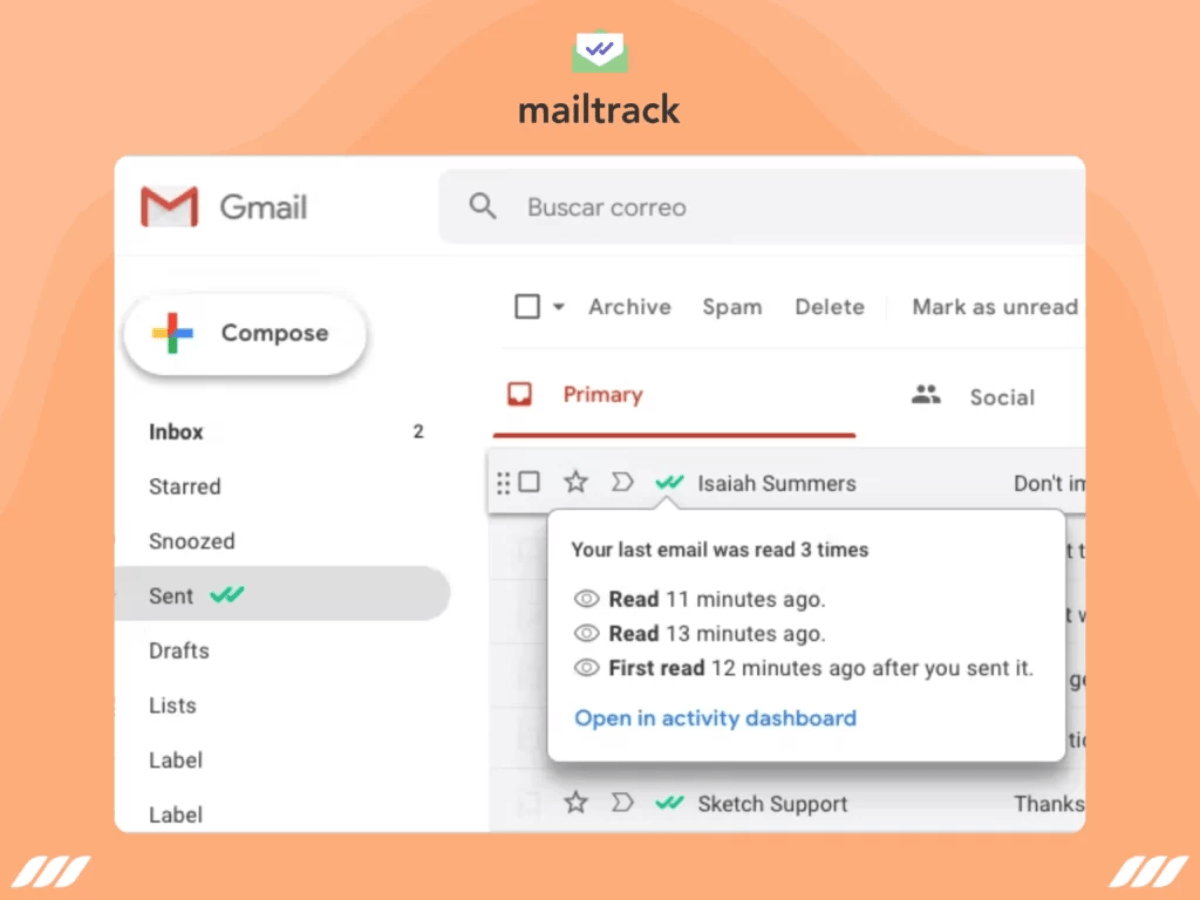
Source: Conduct Email Outreach
Become a Source
Collaborating with reporters to supply information or resources can result in gaining a backlink through attribution.
You can discover such opportunities by utilizing platforms like Connectively (previously known as HARO, or Help a Reporter Out).
Try Broken Link Building
Broken link building involves identifying non-functioning backlinks and convincing the website owners to replace them with links to your site.
This strategy is effective because publishers prefer not to direct their visitors to dead pages, and you provide them with an easy fix.
To find your competitors’ broken backlinks, you can use Semrush’s Backlink Analytics tool.
Simply input a competitor’s domain and click “Analyze.”
Create Linkable Assets
A linkable asset refers to a type of content that is highly likely to attract backlinks organically. This could include tools, research reports, or comprehensive guides.
For instance, Semrush’s article on content marketing statistics has garnered backlinks from more than 2,500 domains. This is due to its value as a reliable reference for discussions about the significance of content marketing.
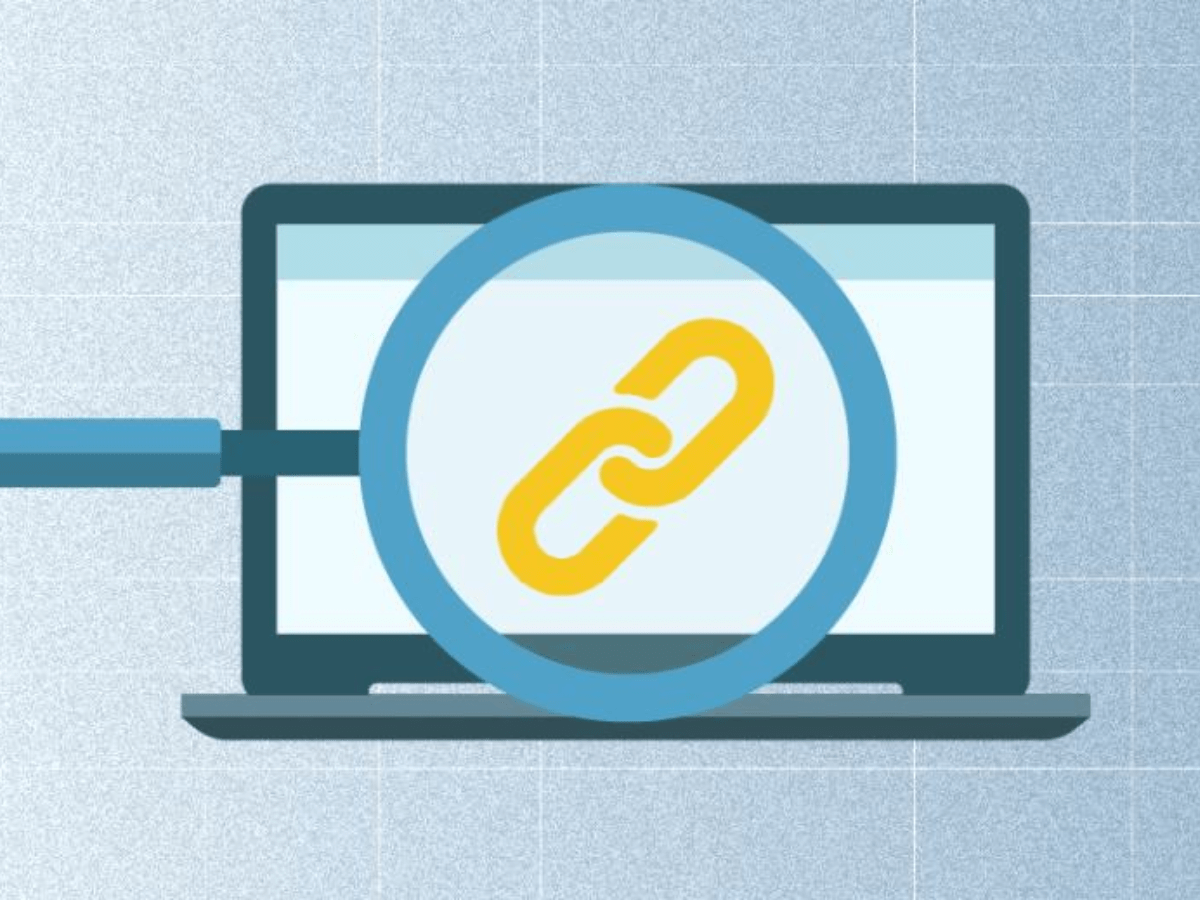
Create Linkable Assets
Find Unlinked Brand Mentions
An unlinked brand mention occurs when a website refers to you or your business without providing a hyperlink.
You’ll encounter a pop-up similar to the one below. To achieve the best outcomes, make sure to complete all the sections.
Focus especially on:
- Monitor this brand: Here, you should enter your brand name and any variations so the tool knows what terms to monitor.
- Track backlinks: In this section, add your domain to allow the tool to check if you have received a backlink.
Once you’re finished, click on “Create query.”
You will then be presented with a list of all the mentions detected.
In the left-hand menu, navigate to “Mention details” > “Backlinks” and select the circle next to “Without backlinks” to filter for your unlinked brand mentions.
For each unlinked mention you identify, consider reaching out to the page’s owner or author to politely request a backlink.
Analyze Competitor Backlinks
Analyzing competitor backlinks is a valuable strategy in SEO link building, as it enables you to adopt effective link-building tactics that have proven successful for your rivals.
This analysis can reveal:
- The types of content that typically attract the most backlinks
- The individuals or sites linking to others within your industry
To begin, access Semrush’s Backlink Analytics tool.
Input a competitor’s domain and navigate to the “Indexed Pages” tab.
This report will display a table listing all of your competitor’s pages arranged by the number of referring domains. Click on the top-performing pages and look for trends in topics, style, length, and format.
For instance, if you notice that your competitor’s most-linked pages all feature videos, you may choose to integrate video content into your own marketing strategy and highlight the quality of your videos when reaching out to potential backlink partners in your SEO link building efforts.
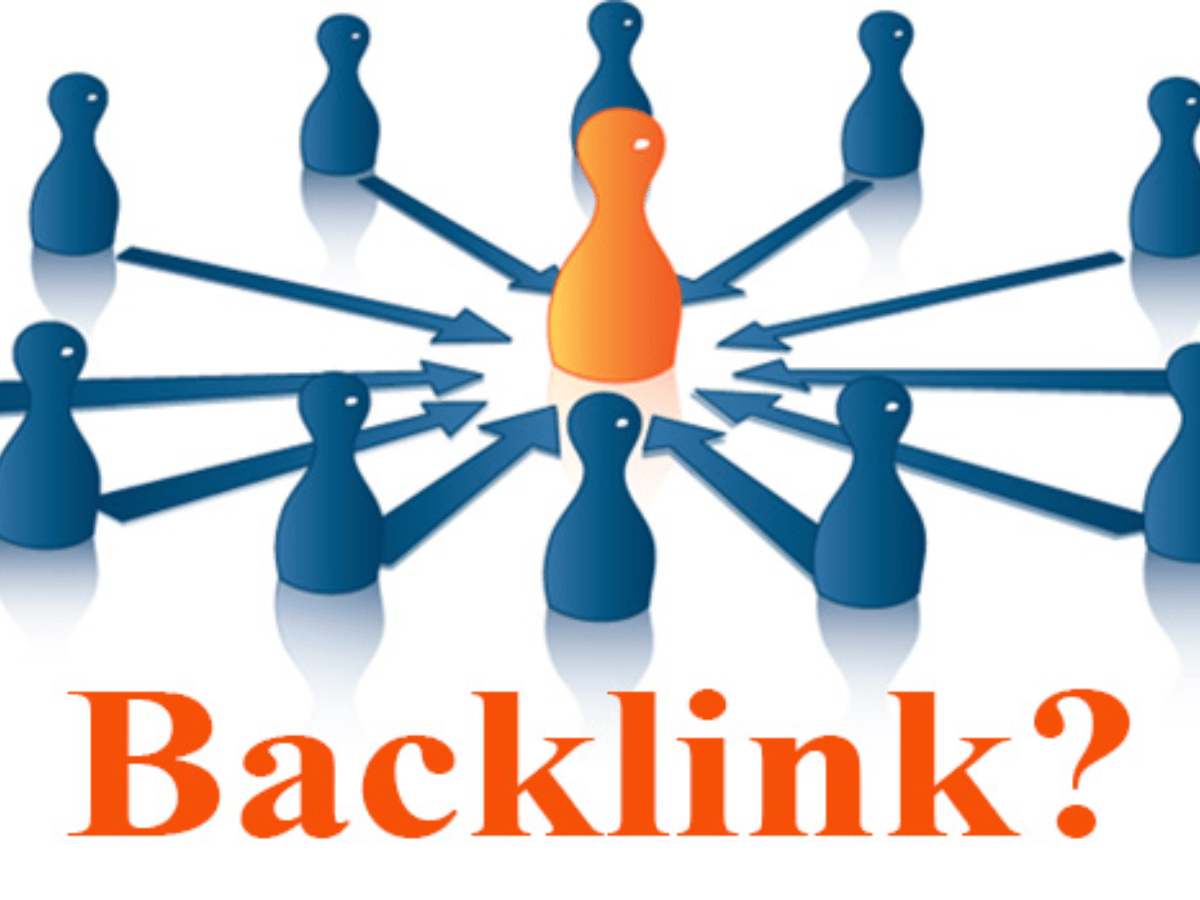
Source: Analyze Competitor Backlinks
Reclaim Lost Backlinks
Recovering lost backlinks is often simpler than acquiring new ones, as these sites had previously expressed a willingness to link to your content.
To efficiently identify any lost links, leverage Semrush’s Backlink Audit tool.
After setting it up, head to the “Lost & Found” tab. For each URL listed, assess why the backlink was lost:
- If the page has been removed, check the website for any new content that could serve as a replacement.
- If the page has been redirected, look for opportunities to place your link on the new page.
- If the page was updated, evaluate whether there’s still an appropriate spot for your link.
If you find a suitable location for your link, consider reaching out to the site owner.
Begin the conversation by politely inquiring about the reason for the link’s removal, which serves as an excellent icebreaker. Then, explain why you believe your link would still be a valuable addition to their content.
With this approach, you may successfully recover your lost backlink or, at the very least, receive some useful feedback. This tactic is an essential aspect of effective SEO link building strategies.
Do a Backlink Gap Analysis
A backlink gap analysis helps identify websites that link to your competitors but do not link to your site.
If a website is linking to a competitor, there’s a good chance they would consider linking to you as well, particularly if you can provide better content.
To begin, access Semrush’s Backlink Gap tool.
Input your domain along with the domains of your competitors, and then click on “Find prospects.” This will aid your SEO link building efforts by highlighting potential linking opportunities.
Digital PR
Digital PR involves obtaining online exposure for your brand. While positioning yourself as a source is one aspect, this strategy often focuses on crafting a compelling story and disseminating it to relevant journalists through press releases.
When reporters feature your story, they may include a link to your website as a credit.
For instance, Parkdean Resorts, a holiday park operator, developed a mini holiday park specifically for hedgehogs, linking it to a news narrative about the endangered status of hedgehogs. This approach is beneficial for SEO link building, as it can result in valuable backlinks from reputable sources.
How to Track Your Link Building Efforts
We suggest conducting link building audits on a monthly basis (or even more frequently) to monitor earned and lost links, as well as the overall quality of your backlinks.
With this approach, you’ll receive monthly notifications regarding your recent audits.
In the “Overview” section of your audit, you can identify potential issues, such as lost backlinks or links pointing to broken pages on your site, along with guidance on how to address them.
Additionally, you can keep track of your site’s Authority Score, which should rise as your backlink profile improves. Remember, even minor increases can reflect significant effort and a substantial number of links in SEO link building.
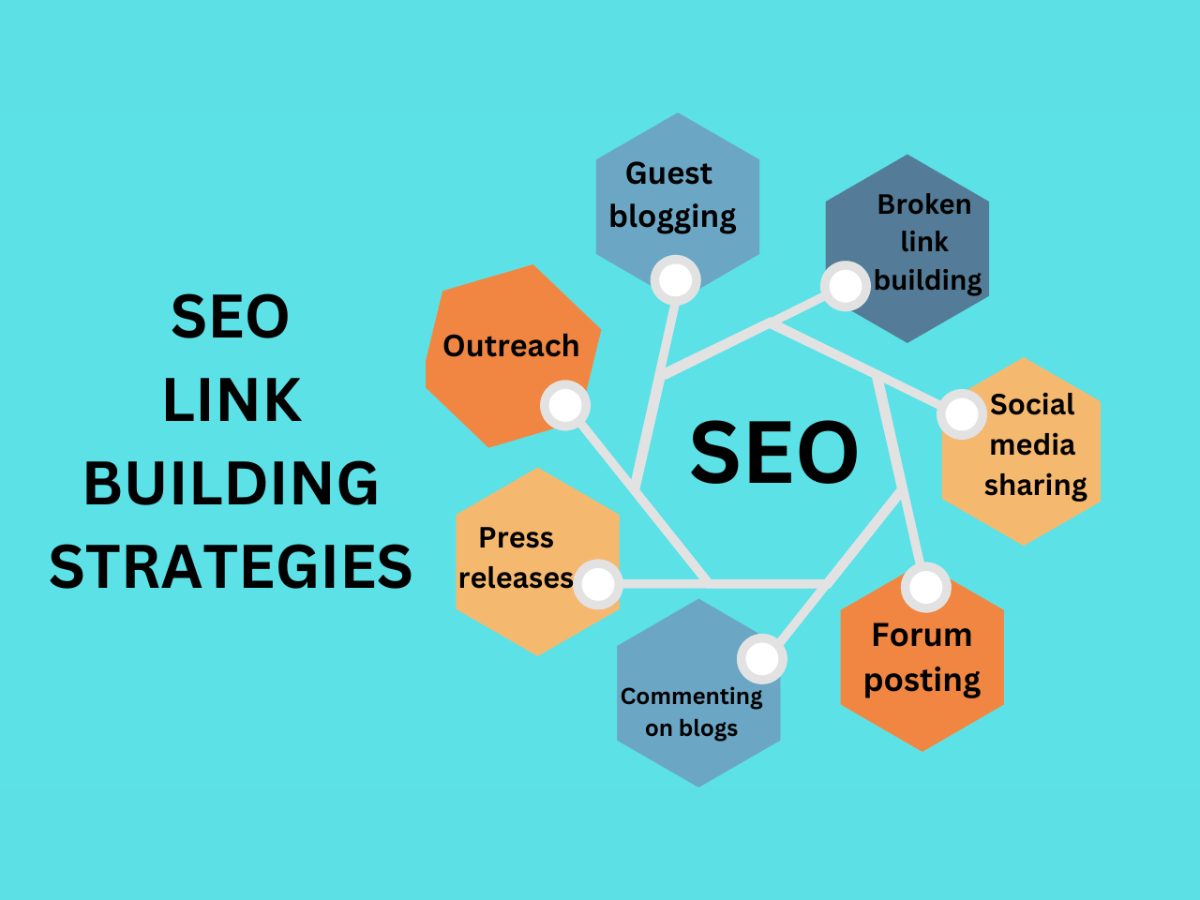
How to Track Your Link Building Efforts
Start Building Quality Links Today
You can obtain essential insights and support to help you acquire valuable backlinks and boost your SEO effectiveness.
- Link Building Tool: Find ideal prospects and enhance your outreach strategy.
- Backlink Analysis: Examine the backlink profiles of your competitors.
- Backlink Gap: Discover domains that link to your competitors but not to your site.
- Backlink Audit: Monitor your link building progress and identify any potentially harmful backlinks.
Utilizing these tools can greatly enhance your SEO link building efforts.
SEO Link Building – Frequently Asked Questions

FAQ What is SEO Link Building?
What is the difference between “dofollow” and “nofollow” links?
Dofollow links are standard links that allow search engines to follow them and pass on link equity (or “link juice”) to the linked page. They contribute positively to the linked page’s SEO, helping it improve its ranking in search engine results.
Nofollow links, on the other hand, contain a specific HTML attribute that instructs search engines not to follow them. As a result, they do not pass on link equity, meaning they don’t directly impact the linked page’s SEO. Nofollow links can still be beneficial for driving traffic and creating brand visibility, but they won’t contribute to your site’s authority in the eyes of search engines.
Is link buying recommended?
Buying links is generally discouraged as it violates Google’s Webmaster Guidelines. Search engines view this practice as a form of manipulation that undermines the organic nature of link building. Engaging in link buying can lead to penalties, such as lower rankings or removal from search results. Instead, it’s advisable to focus on earning links through quality content, outreach, and building genuine relationships within your industry.
What is “internal linking” and how does it affect SEO?
Internal linking refers to the practice of linking to other pages within the same website. It helps search engines understand the structure of your site, the relationship between pages, and the importance of different content. Internal links can improve user navigation, increase page views, and distribute page authority throughout your site, positively impacting SEO. A well-planned internal linking strategy can enhance the user experience and help search engines index your pages more effectively.
How many backlinks do I need to rank on Google?
There’s no set number of backlinks required to rank on Google, as the ideal quantity varies based on several factors, including the competitiveness of your niche, the quality of the backlinks, and the authority of the websites linking to you. Generally, a focus on acquiring high-quality, relevant backlinks is more important than simply aiming for a specific quantity. Conducting competitor analysis can help you understand the backlink profiles of top-ranking sites in your niche.
What are some common SEO link building mistakes?
Focusing on quantity over quality: Prioritizing a high number of low-quality links can harm your SEO efforts.
Ignoring relevance: Links from unrelated sites are less valuable and may not contribute positively to your rankings.
Neglecting anchor text: Using generic anchor text instead of descriptive, keyword-rich text can limit the effectiveness of your links.
Not diversifying link sources: Relying too heavily on one type of link can be detrimental; aim for a diverse link profile.
Failing to monitor backlinks: Not keeping track of your backlink profile can lead to the accumulation of harmful or spammy links.
How long does it take to notice the effects of link building?
The time frame for seeing outcomes from link building can differ significantly. Some websites may notice improvements in rankings and traffic within a few weeks, while others may take several months. Factors influencing this timeframe include the competitiveness of the keywords, the quality of the links acquired, and the overall strength of your website. Continuous link-building efforts, combined with other SEO strategies, are essential for achieving long-term results.
Conclusion
In summary, SEO link building plays a crucial role in enhancing your website’s visibility and search engine rankings. By focusing on high-quality, relevant backlinks, you can strengthen your site’s authority and drive more organic traffic. However, the key to success lies in building a sustainable, ethical strategy rather than relying on quick-fix solutions. With Octopuswriters, you can streamline your link-building process and gain access to powerful, reliable backlinks that boost your SEO efforts. Investing in the right tools and strategies will ensure long-term growth and success in the competitive online landscape.

